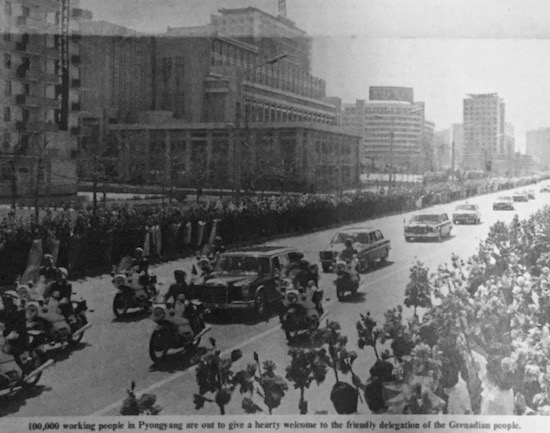
Thread🧵
On Aug. 6 & 9, 1945, the U.S. dropped atomic bombs on Hiroshima & Nagasaki.
The Korean A-Bomb Victims' Association estimates 100,000 of the 700,000 killed or injured by the bombs were Korean.
Korean A-bomb survivors are still fighting for justice. This is their story.
On Aug. 6 & 9, 1945, the U.S. dropped atomic bombs on Hiroshima & Nagasaki.
The Korean A-Bomb Victims' Association estimates 100,000 of the 700,000 killed or injured by the bombs were Korean.
Korean A-bomb survivors are still fighting for justice. This is their story.

TW: Graphic image
In WWII, 5 - 7 million Koreans were conscripted as forced laborers throughout Japan's empire. 670,000 Koreans were sent to Japan to work in shipyards, arms factories, mines, farms, or as "comfort women."
Photo of Korean conscript workers in Hokkaido
In WWII, 5 - 7 million Koreans were conscripted as forced laborers throughout Japan's empire. 670,000 Koreans were sent to Japan to work in shipyards, arms factories, mines, farms, or as "comfort women."
Photo of Korean conscript workers in Hokkaido

In 1945, 80,000 Koreans lived in Hiroshima and at least 30,000 in Nagasaki. Most Hiroshima Koreans worked in war-related industries or farmed small plots after having lost their own land in Korea.
Photo of conscripted Korean workers at Hiroshima's Mitsubishi Shipyard was in 1944
Photo of conscripted Korean workers at Hiroshima's Mitsubishi Shipyard was in 1944

As colonial subjects, Koreans experienced widespread social discrimination, poverty, and lived in segregated neighborhoods. These factors contributed to their high rates of radiation exposure and death. 

50,000 Koreans died in the atomic bombings or shortly after.
Most of the 43,000 survivors returned to Korea. The Korea Atomic Bomb Casualty Association estimates 60% of survivor-returnees died of radiation-related illness or in the Korean War.
Photo: Hapcheon memorial shrine
Most of the 43,000 survivors returned to Korea. The Korea Atomic Bomb Casualty Association estimates 60% of survivor-returnees died of radiation-related illness or in the Korean War.
Photo: Hapcheon memorial shrine

Survivors have faced many challenges in S. Korea.
The ROK govt ignored survivors for decades. Many survivors & their children were disabled & unable to work or afford medical care. 20% of 2nd & 3rd-gen descendants of survivors have congenital deficiencies & hereditary diseases.
The ROK govt ignored survivors for decades. Many survivors & their children were disabled & unable to work or afford medical care. 20% of 2nd & 3rd-gen descendants of survivors have congenital deficiencies & hereditary diseases.

In 1957 Japan began to offer medical benefits to atomic bomb survivors, but excluded Koreans.
Korean A-bomb survivors "illegally" crossed borders, filed lawsuits, and fought for decades to receive legal and medical rights in Japan. Some are still fighting to be recognized.
Korean A-bomb survivors "illegally" crossed borders, filed lawsuits, and fought for decades to receive legal and medical rights in Japan. Some are still fighting to be recognized.

After WWII, the US refused responsibility for A-bomb survivors, but continued to test and station nuclear weapons throughout the Pacific.
Korea is just one link in a long chain of US nuclear destruction, from mines in the Belgian Congo and Diné/Navajo lands to the Pacific.
Korea is just one link in a long chain of US nuclear destruction, from mines in the Belgian Congo and Diné/Navajo lands to the Pacific.

Although most Korean A-bomb survivors left Japan for what became South Korea, about 3,000 went to North Korea. Japan has never compensated any A-bomb survivors in North Korea. Like all DPRK citizens, these survivors receive free medical care. mainichi.jp/english/articl…
The decades-long struggle for Korean A-bomb survivors' rights is not over.
To this day the Korean A-bomb Victims’ Association continues to make the following demands:
To this day the Korean A-bomb Victims’ Association continues to make the following demands:

In early 2020, Nodutdol planned to host the Korean A-bomb Victims’ Association in NYC. The trip was cancelled due to the Covid-19 pandemic. The Victims’ Association plans to host a People's Tribunal in the near future to hold the US accountable.
Justice for Korean A-bomb survivors means more than reparations and recognition; it means an end to the US nuclear arsenal and the system of imperialism these weapons of mass destruction protect.
Association President Sim Jintae made the following statement at a 2015 UN meeting:
Association President Sim Jintae made the following statement at a 2015 UN meeting:

• • •
Missing some Tweet in this thread? You can try to
force a refresh

























